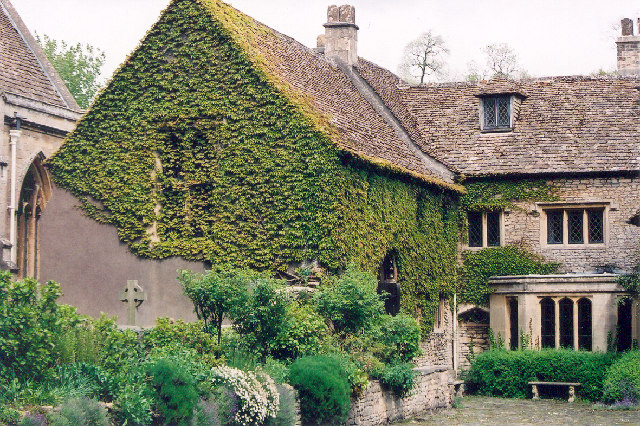Located adjacent to the church, as is the way of these houses, sits Horton Court, built out of stone largely in the 16th century. Not very opulent as such houses go, it has a charmingly domestic aspect, not dissimilar to many others in the Cotswolds, but with one significant difference – the survival of a 12th century Norman Hall and some of the earliest Renaissance decorative motifs in England. The original manor house had been donated to the See of Sarum, who endowed it with a prebend (a sort of ecclesiastical land tenure), the first holder of which was Robert de Beaufeu, who almost certainly built the hall. A rare survivor of its type, it is much altered but it is quite possible to get a strong sense of how it would have been when first raised in about 1150. The Rev. William Knight was the holder of the prebend from 1517. Knight travelled on many occasions to Italy on diplomatic missions for King Henry VIII, including negotiations with the pope over Henry’s divorce from Catharine of Aragon. During his travels he witnessed the Italian artistic Renaissance and incorporated some of the motifs he had seen, most notably in the grotesque jambs of the front door, into the new house he built around the Norman hall in about 1521. Grotesque in this sense comes from the Latin or Italian grotto meaning cave or hollow. Spreading to the other European languages, the term became interchangeable with arabesque and moresque for types of decorative patterns that featured curving foliage elements. In the garden is the very fine Italianate loggia, a Cotswold version of the sort of building found in Florence. The house, owned by the National Trust, is in a poor state. It has been partially opened to the public in the expectation of being able to restore it fully but this will take time – it is worth seeing now in its naturally evolved state, a strange mixture of medieval style and rather run-down early twentieth-century domestic technology.
On opening days the 12th century is turned briefly into a tearoom. A long table laden with homemade cakes sits on one side of the nave, with tables placed strategically among the pews and transepts. Some might regard this as sacrilege. Really, it is simply good sense, for the church is a communal place. It does not detract from its sanctity and the cakes are very good.


0 Comments